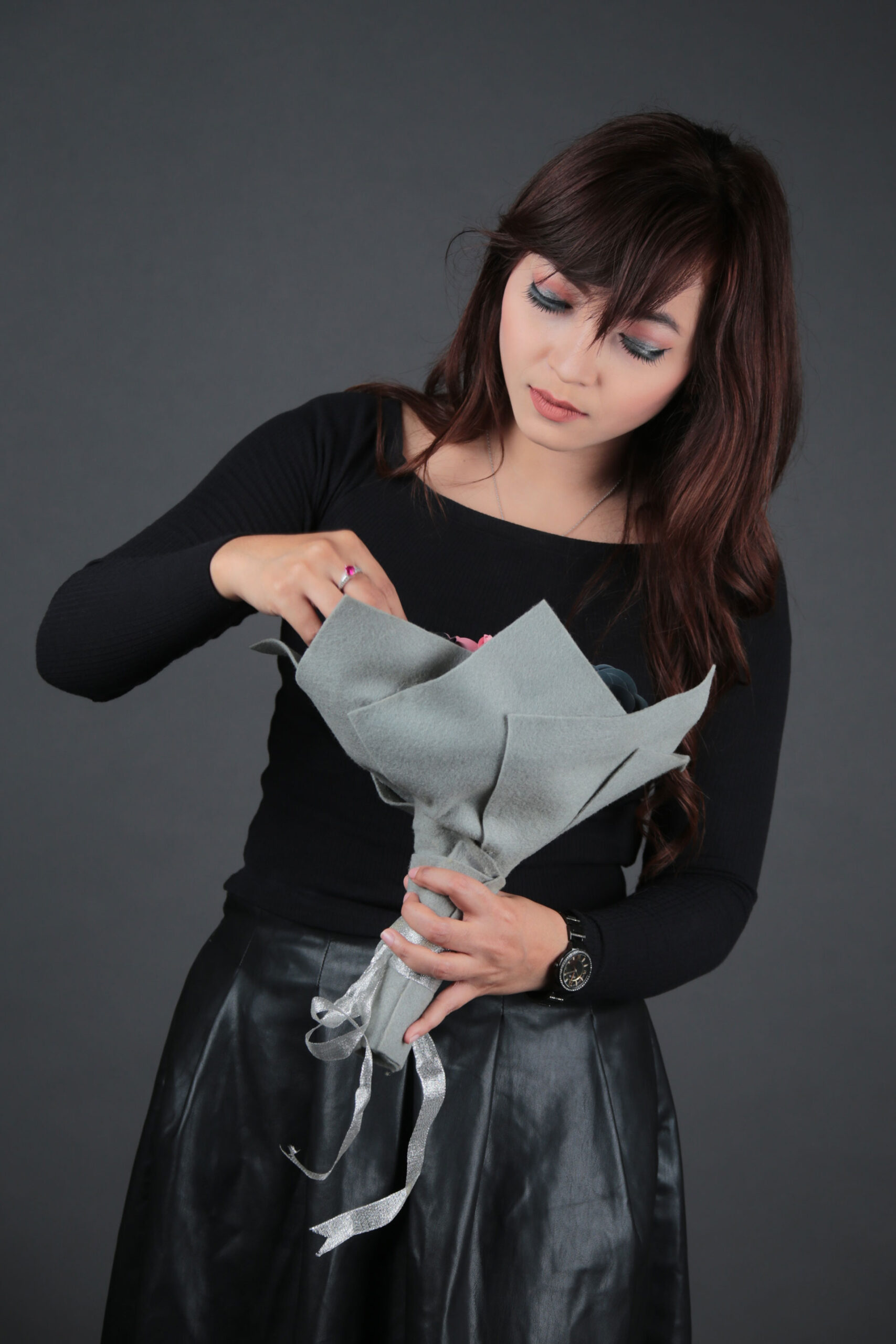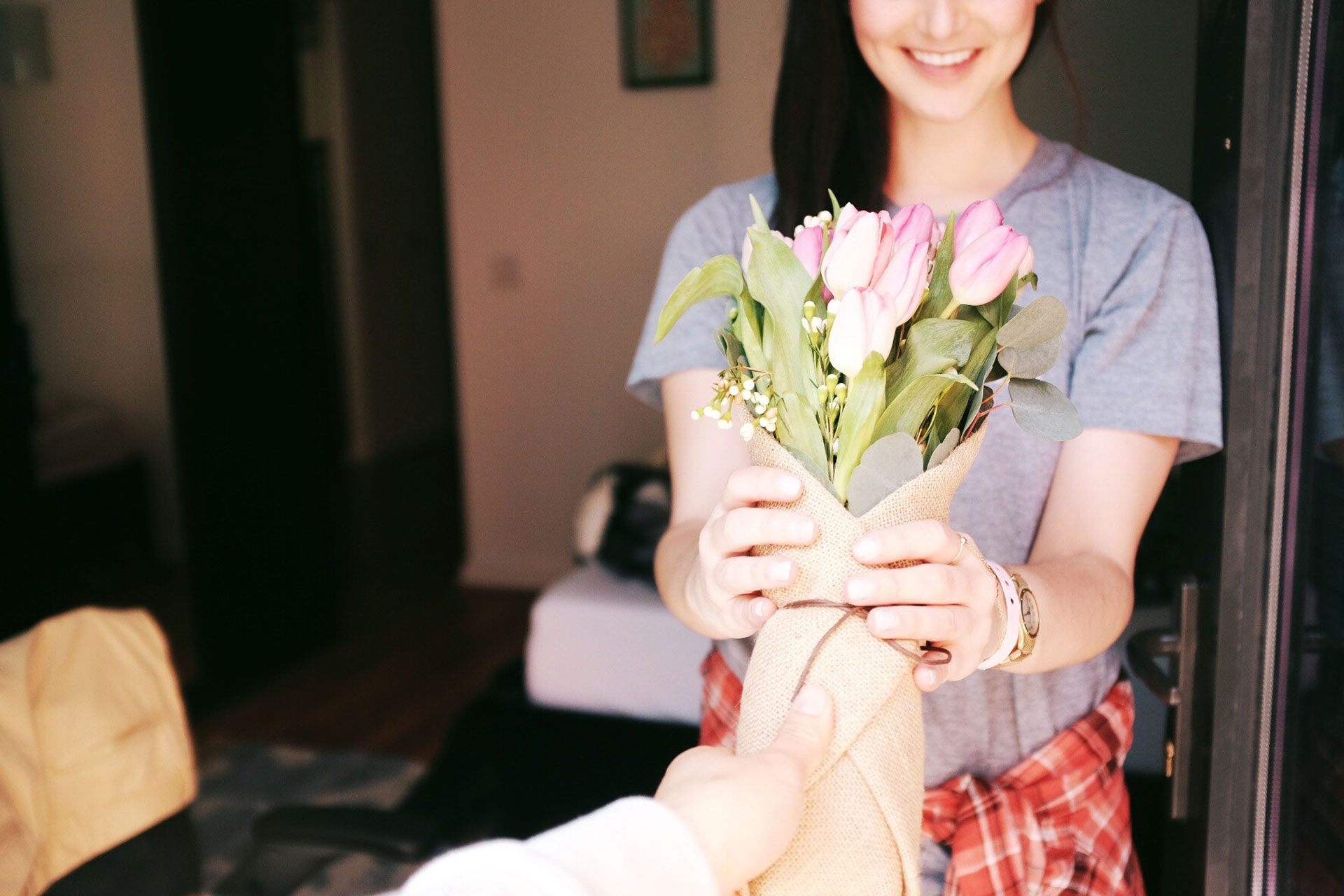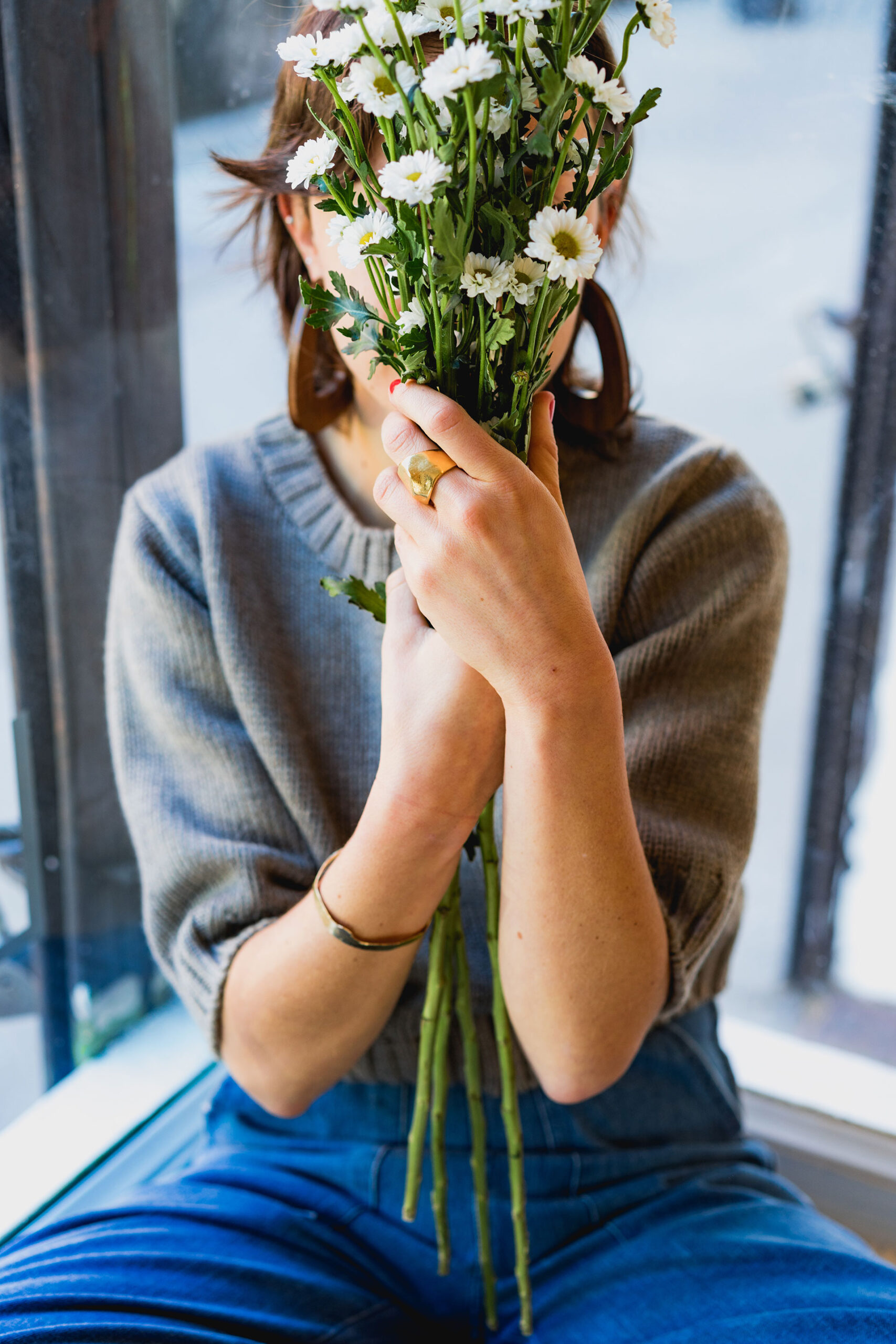£69.99
Eucalyptus ‘Baby Blue’ – Beautiful blue foliage most widely used in floral art. This October Special Offer comprises a 5 litre plant plus all the growing accessories to give it a great start.
This October Special Offer Comprises:
1 x 5 litre Eucalyptus pulverulenta ‘Baby Blue’ multistemmed plant
1 x 60g Rootgrow to give it a good start
1 x 2 litre pack Outback Planting mix
1 x Hessian Mulch Mat kit to keep weeds at bay
1 x 200g pack of Eucalyptus Smart Fertiliser for April 2025
1 x pack of Sulphur Chips for April 2025
1 x Baby Blue Owners Manual – how to grow a Baby Blue and keep it (and you) happy! 😎
FREE DELIVERY TO YOUR DOOR
——–
To give the plant its full name: Eucalyptus pulverulenta ‘Baby Blue’
Buyer beware! I am sorry to say that there are several nefarious practices being exercised by the horticultural industry to con you into buying Eucalyptus gunnii in its cute round blue-leaved juvenile form and calling it Baby Blue. Being polite – this is patently misleading! E gunnii Baby Blue does not botanically exist. All these people are selling is Eucalyptus gunnii and calling it Baby Blue, and these trees will mature into a green, long-leaved tree at 80ft tall, if you don’t prune it.
E pulverulenta ‘Baby Blue’ never produces adult foliage – they remain cute, blue and roundish – kidney-bean shaped.
The correct form is the entirely different species Eucalyptus pulverulenta ‘Baby Blue‘ and it is a much more difficult to produce a good quality nursery plant than gunnii. Further more, E gunni does smell strikingly of eucalyptol, but is it NOT the same aroma as Eucalyptus ‘Baby Blue’ which has a sweet softness to the very strong fragrance. There are difficult aromatic oils at play in Baby Blue. Don’t be conned into buying E. gunnii Baby Blue – you are buying E gunnii – a wolf in sheep’s clothing! Apologies for the rant!
The Baby Blue Story: Very widely grown in Southern California, Mexico, Europe and Australasia, Eucalyptus ‘Baby Blue’ has long been a favourite of the cut-foliage industry with the stems being highly sought-after as freshly picked or dried for floral art. It is a naturally dwarf species, rarely exceeding 3m and can be grown as a clipped shrub.
With careful pruning, this can be trained into a nicely shaped bush; left to its own devices it can be described as having an ‘interesting architecture’.
This is a good variety for the smaller garden plot and could be grown in an air-pot on your terrace, but you need to follow the rules on growing Eucs. in pots. See the other Baby Blue October special offer for Growing in a Pot.
Shoots ‘n Leaves: Very ornamental foliage. Young shoots are a soft violet with a white bloom. Juvenile foliage is an intense silvery blue. The young rounded leaves appear to ‘grasp’ the stem. Adult foliage is indistinguishable from the juvenile foliage. Smaller than straight wild type species E. pulverulenta. Rounded glaucous/blue aromatic leaves crowded on stems.
Bark: Blue when young. Smooth silvery grey, sometimes with olive, gold and russet tones.
Flowers: White fluffy flowers in profusion arranged in whorls around the stems, whilst still quite a young tree in mid Winter through to early Spring.
Leaf Aroma: Very strong typical fresh menthol Eucalyptus aroma.
Rate of Growth: Slow growing at less than 1m per year. Is quite slow to get established for a Eucalyptus – still fast for an evergreen shrub.
Height in maturity: If trained as a standard tree to grow upwards, it could reach approx. 3-4 m. Eucalyptus ‘Baby Blue’ responds well to regular annual pruning to keep it small either as a bushy shrub or shrub-onna-stick.
Hardiness: Tolerating down to around -10 °C to -14 °C mark, once mature. Hardiness in Eucalyptus is governed by provenance of seed, how it is grown (i.e. high nitrogen levels reduces cold tolerance), age of the tree – the older your tree, the hardier it will be. Younger Eucs are more susceptible to frost damage.
Lignotuber: It has one, which is a good thing! Eucalyptus ‘Baby Blue’ will regenerate off the lignotuber if cut down by man, beast or nature. It also produces many shoots from epicormic buds lying dormant beneath the bark higher up the tree; so Eucalyptus ‘Baby Blue’ will respond extremely well to both coppicing and pollarding practices.
Ecology:
Bees: All Eucalyptus produce flowers with nectar and pollen, but this species has particularly spectacular flowers making it a real draw for honey bees looking for winter foraging.
| Weight | 3 kg |
|---|---|
| Dimensions | 30 × 30 × 20 cm |
| Size |
Preferred Soil Type: Any normal garden soil. Grows well for us on our alkaline boggy yellow clay at Grafton Nursery. To encourage deep rooting and therefore good stability, prepare a deep planting pit as per our instructions. If planting a large number for firewood or cut foliage, subsoiling may be a good practice to follow, especially if pastureland has previously been used by livestock.
Free draining soil in an open sunny aspect, surrounded by other shrubs to give it a little shelter. It enjoys a sheltered position – not that keen on exposed locations.
Tolerant of poor stony soils once established. E. ‘Baby Blue’ does not require a rich soil and can survive in a free-draining environment. However, if growing for cut foliage under these conditions, adequate fertiliser and irrigation will be essential for a successful outcome. It is also important that your Euc. is given lots of water during its establishment phase, before you abandon it to its fate. The tree needs to establish a good root system before it can survive in these challenging conditions. No grass, no weeds and a thick bark chip mulch, to a depth of 150 mm (6 inches) are essential to assist with good establishment.
For the best results, follow our planting and aftercare watering instructions; issued with every order.
Make life easier for you and your new tree: Plant with the mycorrhizal fungi product Rootgrow. Eucalyptus in particular have a special, lifelong relationship with their root fungi, which actively transport food and water directly into the tree roots, helping your new Euc establish faster and more efficiently, particularly in challenging types of soil.
Growing on the Coast: We have no experience of growing E. ‘Baby Blue’ in a coastal environment. I suspect it may do well when grown as a bushy shrub in milder coastal districts, when grown a mile or two inland of the sea, but this needs trialling. Do get in touch if you are giving this a go and let us know how you get on.
Pot Culture Outdoors: E. ‘Baby Blue’ can be successfully grown as a multi-stemmed shrub or as a standard in a container provided you are prepared to grow it permanently in an air-pot container, to pot on at the recommended intervals and to supply it with sufficient food and water during the growing season. If not watered enough, it becomes thin and spindly, dropping its lower leaves and then stop growing.
As a Houseplant in a Conservatory: E. ‘Baby Blue’ can be grown in a conservatory with plenty of light and low humidity. If the air is too moist, it will suffer from oedema – swelling of the leaves.
How to grow or train it to get the best out of it: Growing shrub-onna-stick clipped standard for the smaller garden or courtyard: this is an opportunity to grow a Eucalyptus in a confined space and control its overall size. You can produce a small tree on a 1m – 1.2m tall trunk with a clean stem and a head of around 1.0-1.2m across, with an overall tree height of around 2m. This requires an annual pruning regime on March 18th (National Eucalyptus Day) and nipping out of newly produced stems. Growing a multi-stemmed bush or tree. E. ‘Baby Blue’ responds well to coppicing/pollarding and readily produces a multi-stemmed specimen.
Why would you want to do this? To create a tree with more body or ‘mass’ of branches and foliage for cutting. Once grown back up to its full potential, it will now have several main trunks – an attractive multi-stemmed architectural tree, especially if it has exceptional bark.
Growing in the Ground Method: This will give you the highest yield. If you would like to grow your Baby Blue in a pot – see the bottom of this page.
Year 1 – plant in the ground in full sun, as per our planting instructions. Digging a deep hole down to 450-500mm (18-20 inches), removing all the subsoil and replacing it with good quality topsoil mixed with sharp sand (10-20% by volume) is important to encourage deep rooting into the lower soil horizon. This is where the soil will be warm +6 Celsius in a cold winter and there will also be water available for your Euc. When planting your Baby Blue, remove the air-pot container and plant the root-ball a little deeper than you usually would plant a tree, by about 25mm (1 inch). This will bury the lignotuber at the base of the trunk – this is a good thing!
Over the first winter ensure there is a deep bark chip mulch.
If conditions are very cold and windy, construct a little windbreak around your Baby Blue using horticultural fleece stapled onto wooden tree stakes – set at around 30cm (1 ft) away from the plant on all sides. Knock off any snow that falls on to the foliage.
Year 2
March 18th – go out and measure the diameter of your Baby Blue’s trunk at 1m from the ground. I suspect it wont yet have achieved the gold metric of 50 mm (2 inches) diameter or the circumference measurement of 150mm (6 inches). Baby Blue takes an extra year or so to get its feet under the table and will require you to again resist all temptation to take an early harvest. It needs every leaf to make food to fatten the trunk.
Year 3
March 18th – go out an measure the diameter of your Baby Blue’s trunk at 1m from the ground. If all has gone to plan, I would expect the trunk to be nice and fat, which means that you can pollard down to around 900mm (3ft). Cut all the side branches back to 25mm (1 inch) of the trunk. Mulch, weed and feed as before. If the Spring is dry, water your Baby Blue well, to encourage lots of lovely new shoots.
May in Year 3 – by now there should be lots of new shoots on the structure and you need to nip out the ends to encourage bushiness.
Harvest – any time from August onwards, the shoots should be firm enough to not wilt at the ends once cut and plunged in a vase of water.
Growing Baby Blue in a pot.
This can be achieved, but it is best to grow it in the airpot container system, by potting on your Baby Blue into a 20 litre airpot container. Follow the instructions for feeding and watering in our Blog Post entitled How to grow a Eucalyptus in a pot and keep it alive. The pruning regime will be as detailed above – the same as for growing a Baby Blue in the ground.
Floral Art: E. ‘Baby Blue’ is one of the top three for floral art, producing excellent cut foliage for Flower Farmers and floristry bouquets and wreaths.
Chickens: The shredded foliage of E. ‘Baby Blue’ is excellent at keeping Chicken nest boxes and hen houses free of red mites, which detest the presence of Eucalyptol. I used to line our Chicken boxes with shredded leaves, strew the floor and pile up the spindly branches for the chickens to make nests. It was all great till the foxes moved into the next field!
In the Nursery:
Summer/Autumn 2024
Good stocks of new 1 litres growing on- this year we have trained then as bushy shrubs by pruning a few times early on in life. This has resulted in multiple stems which can grow up to give a bushy shrub excellent for harvesting cut foliage.
Larger specimens of 5 litre feathered standard stock are ready now.
Name: Eucalyptus pulverulenta ‘Baby Blue’ is a selection of the standard E. pulverulenta.
MYRTACEÆ; Myrtle Family
It is sometimes called ‘Little Boy Blue’ or (even worse!) as a E. gunnii ‘Little Boy Blue’. (See our blog post on the naming of names).
Meaning of the name: ‘Baby Blue’ given as a name, I suspect, by its selector, because of it small neat blue foliage.



Tel: 01905 888 098
Monday-Friday, 9.00am-4.00pm
Grafton Nursery,
Worcestershire
(Visits by appointment)


We’re here to help you choose your Eucalyptus
We’ll also email you with expert seasonal advice for
your Eucalyptus & exclusive offers. No spam – just Eucalyptus.
You can opt out at any time. Click here to see our privacy policy in full.